After years of New Zealand dominating Super Rugby, the usual post-World Cup shake-up has rocked the competition.
The Crusaders have lost their all-conquering coach and headline acts, the Chiefs’ starch has gone and the Blues have also seen their main act, Beauden Barrett, depart.
In fact, only two head coaches remain in their roles on the Shaky Isles, with new All Blacks coach Scott Robertson calling on Leon MacDonald from the Blues and Jason Holland from the Hurricanes.
Chiefs coach Clayton McMillan remains in charge in a boost for the franchise following the departures of Brodie Retallick, Pita Gus Sowakula and Brad Weber. Incumbent All Blacks skipper Sam Cane won’t be with the Chiefs either after electing to take up a season in Japan.
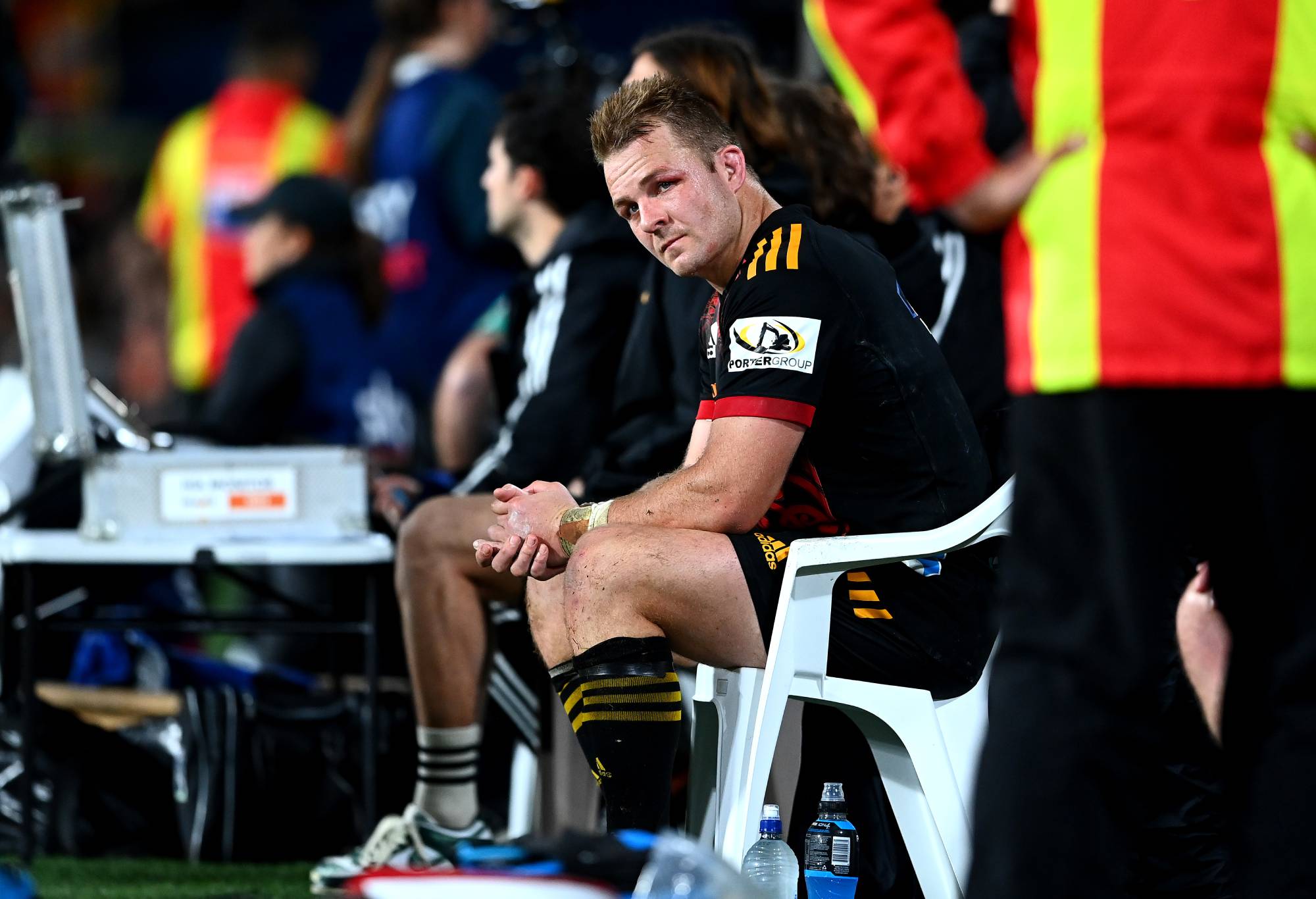
Sam Cane won’t play for the Chiefs in 2024. (Photo by Hannah Peters/Getty Images)
The Highlanders’ Clarke Dermody remains head coach, with the franchise’s sole championship-winning coach Jamie Joseph returning to oversee and mentor the developing coach.
The changing in the guard will likely impact all five franchises, with no side immune to the riches found elsewhere and the passing of the baton.
It’s not just the Chiefs who have lost a handful of their best, but the Crusaders too. The announcement of all 12 squads on Thursday revealed the unfortunate reality of the player drain.
Generational players Sam Whitelock and Richie Mo’unga can’t be replaced overnight.
Throw in a new coach Rob Penney, who returns to the franchise he once served as an assistant under Robbie Deans, and there are questions as to how he can pick up where ‘Razor’ Robertson left off.

Playmaker Richie Mo’unga and coach Scott Robertson have left the Crusaders. (Photo by Hannah Peters/Getty Images)
Across the ditch and Phil Waugh will be hoping the five Australian Super Rugby franchises can now challenge New Zealand’s.
Can they?
Well, all five Super Rugby franchises appear better placed on paper. The competition will be better and there will be less one-sided matches. That’s a big plus.
Any side with a fit and firing Taniela Tupou will be better placed, while Lukhan Salakaia-Loto should offer some physicality and lineout prowess to ensure the Rebels match it up front.
Much will depend on how Carter Gordon responds after his tough World Cup campaign.
The Reds have a brand-new coaching team and Les Kiss brings experience to the role. Can he bring the detail that has been missing in recent years?
Darren Coleman’s Waratahs were perhaps the biggest disappointment in 2023. Can they shock a few next year?
Simon Cron has brought in some quality, but the Force still appear light up front.
Stephen Larkham has had a couple go, including Pete Samu, but perhaps the biggest change will be felt in the back-room with Laurie Fisher and Dan Palmer departing.
Nonetheless, Australia’s sides should all challenge their New Zealand opponents more in 2024.
As for the Drua, Mick Byrne’s side won’t surprise anyone in 2024. They’ll have to take their game to a new height after shocking several sides at home.
Moana Pasifika, meanwhile, have made changes everywhere, including their coaching staff, but look set for another long year.
Here, we run the rule over all 12 Super Rugby franchises.
MOANA PASIFIKA
Strengths: 19 players from Moana Pasifika participated in the World Cup. That’s a healthy number that will give Tana Umaga some confidence. The arrival of prop James Lay from the Blues and return to fitness of Sekope Kepu will help. The loose-forward trio is explosive and William Havili is a skilful operator who can play at fly-half or fullback.
Weaknesses: 20 new players. From a continuity point of view, that’s an alarming number. For the side to be successful, they need more support from New Zealand Rugby. The departures of Levi Aumua and Timoci Tavatavanawai were significant blows.
Key player: Sekope Kepu
Finish: 12th
FORCE
Strengths: The Force have plenty of young talent. Of course, there is the old head of Nic White arriving to complement the pace and threat of Isack Fines-Leleiwasa, but young playmakers Reesjan Pasitoa and Max Burey are worth paying attention to. Where Ben Donaldson plays will be fascinating. The Force have a hard-working back-row, with Carlo Tizzano bringing a serious on-ball threat. Santiago Medrano was one of the Force’s best in 2023 and the tight-head prop needs to go again in 2024.
Weaknesses: The Force’s pack still looks light on. No Super Rugby side can compete without a scrum and managing resources will be one of Cron’s biggest issues. Much will depend on new recruit Atu Moli and Medrano in the front-row. Harry Hoopert is another who needs a big year, having gone across from the Reds. Izack Rodda’s fitness in the second-row is imperative.
Key player: Santiago Medrano
Finish: 11th
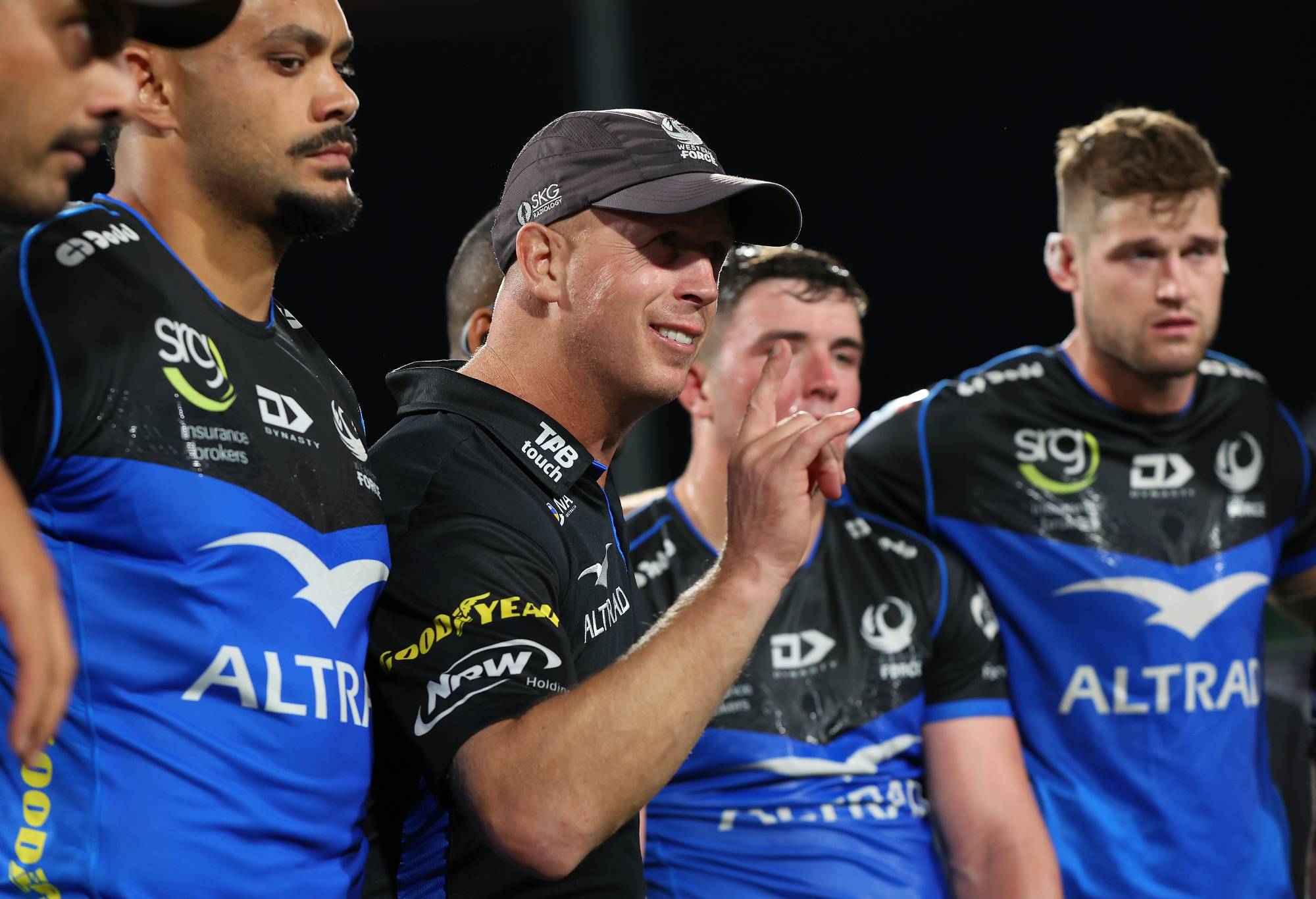
Simon Cron has brought in some new talent, but can their forward pack cut it? (Photo by Paul Kane/Getty Images)
HIGHLANDERS
Strengths: Any franchise that welcomes back Jamie Joseph will benefit in the long-run. The Highlanders at least have the foundations in place with Ethan de Groot and Jermaine Ainsley. Folau Fakatava is a genuine threat and Rhys Patchell will provide some direction. The Highlanders have some explosiveness out wide in Jona Nareki and Tavatavanawai.
Weaknesses: Changes throughout the entire squad mean cohesion and stability will prove problematic. The second-row is light and the halves have never played together. The midfield is young, too.
Key player: Pari Pari Parkinson
Finish: 10th
REDS
Strengths: The Reds have a well-balanced side that has had an injection of international muscle up front-row. That will help. The Reds were missing the detail over the past three years. If Les Kiss and his coaching staff can provide that, the Reds can surprise. The health and fitness of Hunter Paisami and Isaac Henry in the midfield are crucial.
Weaknesses: The Reds’ playmakers are young and exciting, but very rarely do 20-year-olds win championships. The Reds have recruited heavily in the front-row, too. That’s an admission their current local stock is still a year or two away. It’s time for the second-row to stand up and be counted. The Reds aren’t helped by a tough opening six weeks.
Key player: Jock Campbell
Finish: 9th
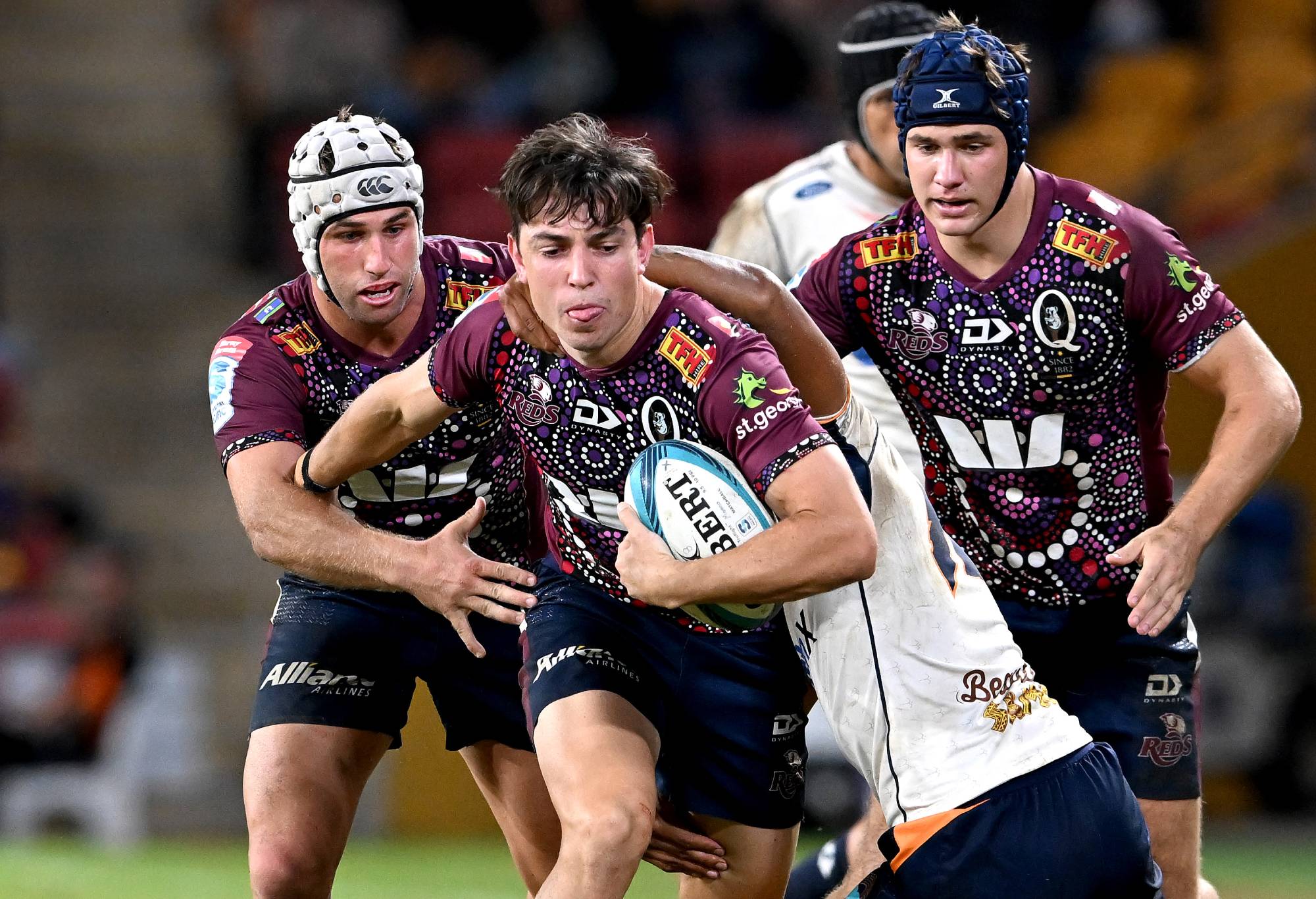
Jock Campbell has an important role to play for the Reds given the youth at fly-half. (Photo by Bradley Kanaris/Getty Images)
DRUA
Strengths: The Drua welcome back 18 internationals to their side, having shocked the Wallabies to qualify for the knockout stages of the World Cup. The Drua’s biggest strength is their desire to use the ball in the heat. That can’t be understated. The Drua upset the Crusaders and overran the Reds to seal their quarter-final spot by winning at home.
Weaknesses: The loss of Caleb Muntz to a serious knee-injury on the eve of the World Cup is a big one. The Drua’s discipline remains one of the big work-ons, while their set-piece remains a work-on. From being the hunters to the hunted, how the Drua measure up at home will be telling.
Key player: Kemu Valetini
Finish: 8th
WARATAHS
Strengths: The backline on paper looks quality. With a Test midfield, pace and power and height out wide, an elusive Max Jorgensen and a battle-hardened halves pairing, the Waratahs have an exciting roster. Up front, Coleman has built some depth in the front-row and added some workman-like players in the back-row. Miles Amatosero will be a force to be reckoned with in the years to come, but he will have a tough 12 months getting up to speed with Super Rugby after starting his career in France.
Weaknesses: The draw. The Waratahs have a tough start and after a disappointing 2023, could the mental scars prove problematic? Indeed, winning back the public could be the hardest thing for the Waratahs. Discipline is another factor the Waratahs must improve in.
Key player: Angus Bell
Finish: 7th
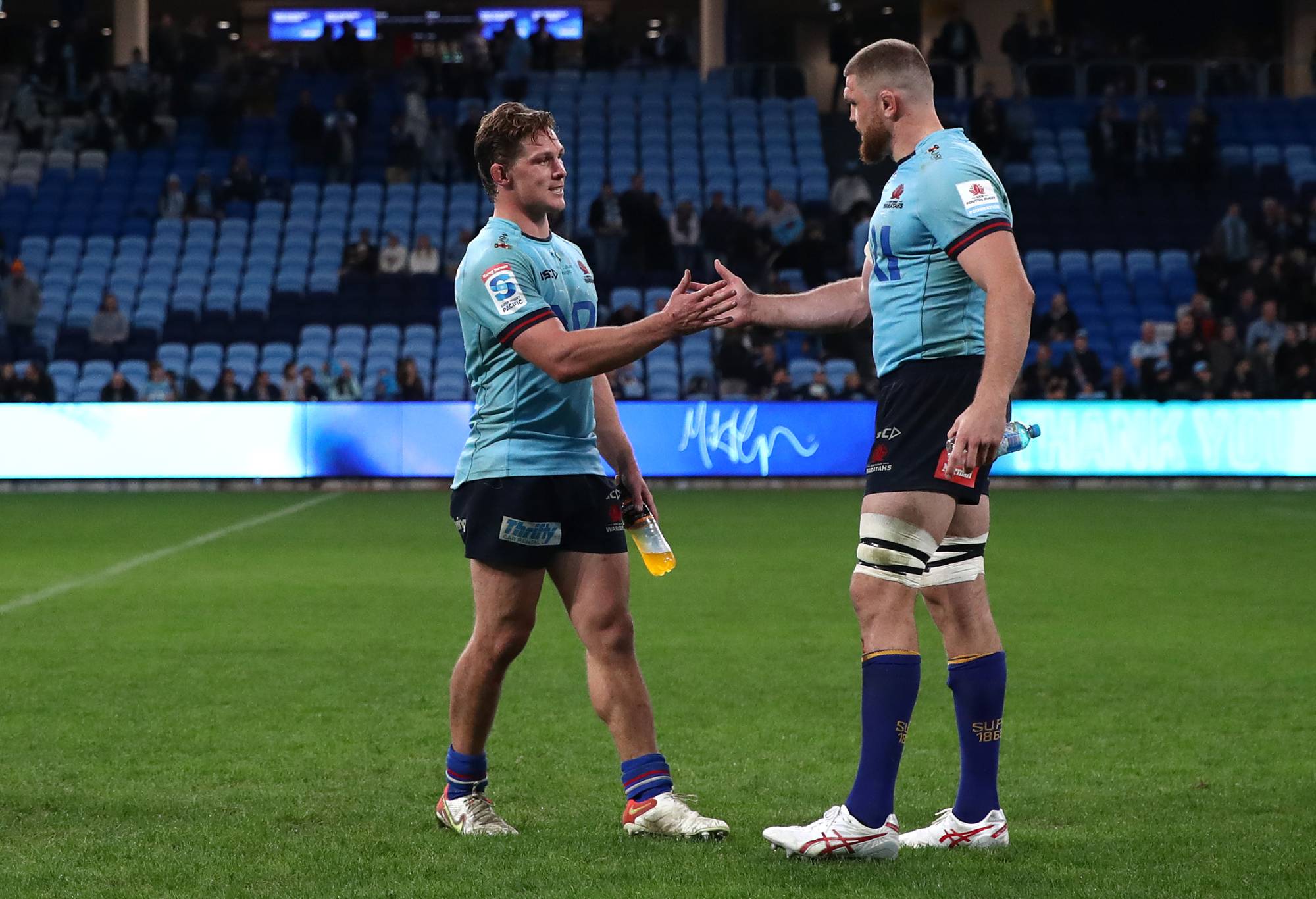
The Waratahs have farewelled club great Michael Hooper (L). (Photo by Jason McCawley/Getty Images)
HURRICANES
Strengths: The Hurricanes remain one of the most explosive sides in Super Rugby. They can blow teams away quickly and have Test players littered across the backline, with Cam Roigard and TJ Perenara to battle it out at halfback. Jordie Barrett remains a constant in the side.
Weaknesses: The Hurricanes have lost two of their leaders: Dane Coles and Ardie Savea. Throw in a new coach and that’s a lot of leadership and knowledge gone. Fortunately the Hurricanes have some quality in the back-row, but Savea is the World Rugby player of the year. The ‘Canes are a bit lighter in the second-row.
Key player: Asafo Aumua
Finish: 6th
REBELS
Strengths: Taniela Tupou. It sounds simplistic, but if Tupou stays fit then the Rebels can cause opposition teams all sorts of trouble. The Rebels already had a good front-row, now they’ve got a quality one. The best in Australian rugby. Much will depend on how Tupou and new recruit Lalakai Salakaia-Loto fair. Should they roll up their sleeves and demand attention, the Rebels’ backline can come into their own. Gordon should be better for the experience in France.
Weaknesses: The back-five forwards remain light on depth. There are plenty of moving parts in the backline, too. Matt Proctor is a proven player but outside of him, the Rebels are developing in the backline.
Key player: Taniela Tupou
Finish: 5th
BLUES
Strengths: After a couple of years interchanging with Barrett, Stephen Perofeta should have the experience to be able to manage the game better at fly-half. Lethan outside backs, with three of the best finishers in the world. The backline has a reasonable pack to play behind. Vern Cotter is no mug either.
Weaknesses: The Blues had a rock star backline in 2023, but at times their forward pack couldn’t quite stick with the Crusaders and Chiefs. That will be a concern, particularly after the departures of Nepo Laulala, James Lay and the hardworking Tom Robinson.
Key player: Stephen Perofeta
Finish: 4th
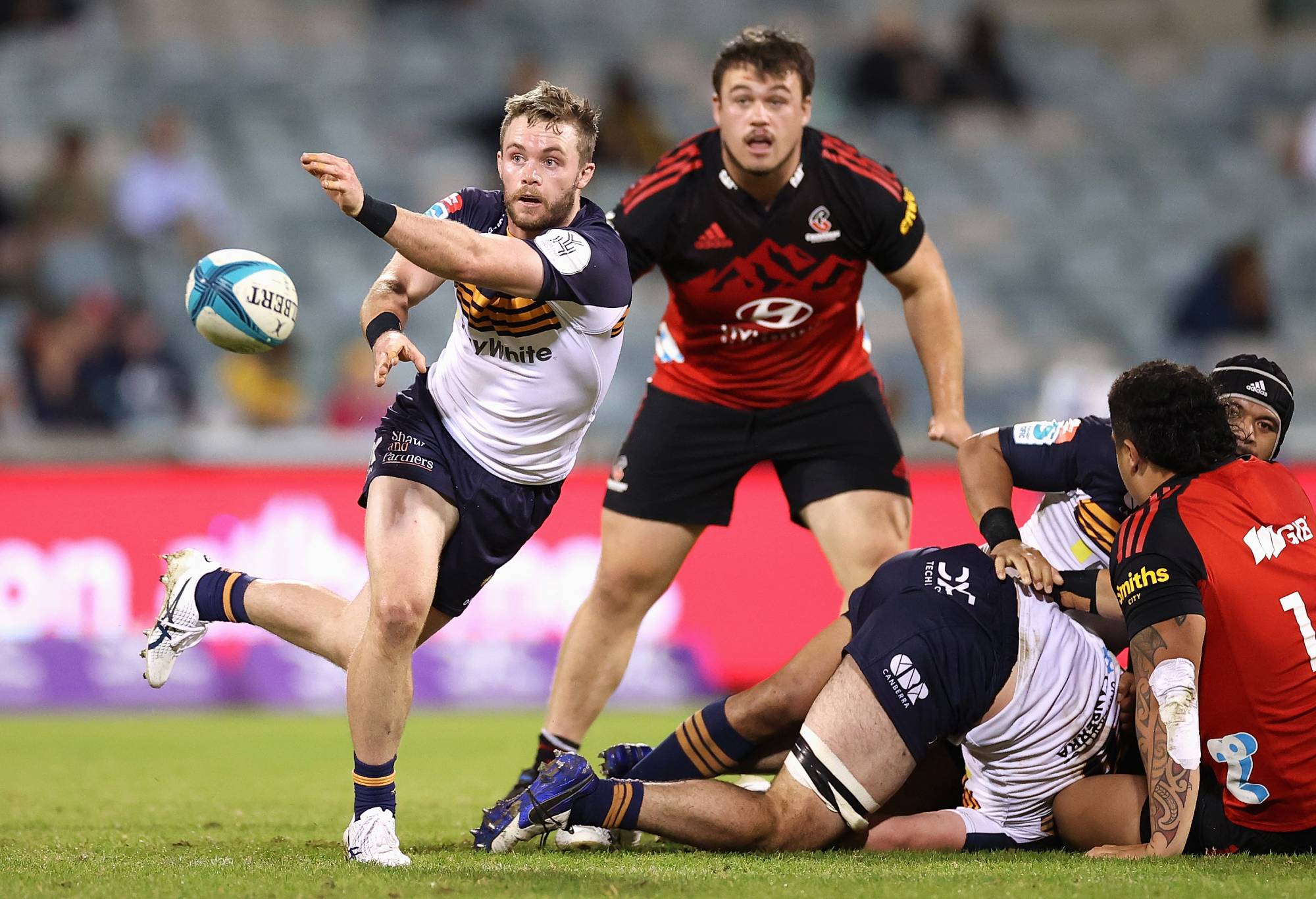
Ryan Lonergan will wear the No.9 jersey in 2024 for the Brumbies following Nic White’s departure. (Photo by Cameron Spencer/Getty Images)
BRUMBIES
Strengths: The Brumbies’ best rugby in 2023 came with Ryan Lonergan at halfback and Jack Debreczeni at fly-half. That duo will likely play a lot together in 2024 following the departure of Nic White. The Brumbies’ second-row is one of the strongest in then competition and they have depth in the position with Tom Hooper able to shift to the two-row, as well as Darcy Swain competing with Cadeyrn Neville and Nick Frost. Keep an eye on Luke Reimer, who played the role perfectly of super sub over the past two seasons but will play more minutes following Pete Samu’s departure.
Weaknesses: There’s still plenty of depth in the Brumbies, but is it world class? Once Scott Sio could be rotated alongside James Slipper. Now Sio is gone and Slipper is another year older. Allan Alaalatoa will likely miss the opening few weeks as he recovers from his Achilles injury. How will the departures of Palmer and Fisher affect Larkham’s coaching team, too?
Key player: Tamati Tua
Finish: 3rd
CHIEFS
Strengths: The Chiefs’ backline is one of the hottest in the competition. Perhaps it’s the best. There are threats across the entire backline, with Damian McKenzie the star at fly-half. But that midfield is strong, too: Anton Lienert-Brown and the fit-again Quinn Tupaea are class. Samisoni Taukei’aho is also a Super Rugby wrecking ball.
Weaknesses: The Chiefs’ back five forward pack has taken a hit. Retallick is gone. Ditto Pita Gus Sowakula. While Cane is off for the year. That’s a stack of fire power and leadership to take away. The departure of Weber could prove telling as well.
Key player: Damian McKenzie
Finish: 2nd

Damian McKenzie is the star No.10 left in New Zealand rugby. (Photo by Phil Walter/Getty Images)
CRUSADERS
Strengths: The Crusaders have recruited well. Most wouldn’t be able to cope with the departures of Whitelock, Mo’unga and Leicester Fainga’anuku, but Penney has brought in experience and leadership in Halfpenny and Ryan Crotty. The other? Levi Aumua, who was chased by everyone and will provide a serious threat in the midfield. There’s still plenty of class in Will Jordan and Sevu Reece, while the injured Fergus Burke is highly regarded. How much rugby Burke misses could prove telling, with Halfpenny a possible solution at No.10 while Crotty and David Havili will act as strong foils in the midfield. Up front and there’s strength in Test props Joe Moody, Fletcher Newell and Tamaiti Williams. Scott Barrett is proven quality and the best is yet to come for Ethan Blackadder if he can stay fit.
Weaknesses: A new coach always brings an element of the unknown. Throw in Rob Penney’s underwhelming career as a head coach and there’s reason to raise eyebrows. Add to that the decision of Codie Taylor to miss the first half of the season, Oli Jager’s early release and the loss of some serious quality and the Crusaders have some challenges ahead. Mo’unga’s departure and Burke’s injury means the Crusaders are thin at No.10.
Key player: Fergus Burke
Finish: 1st



































































































